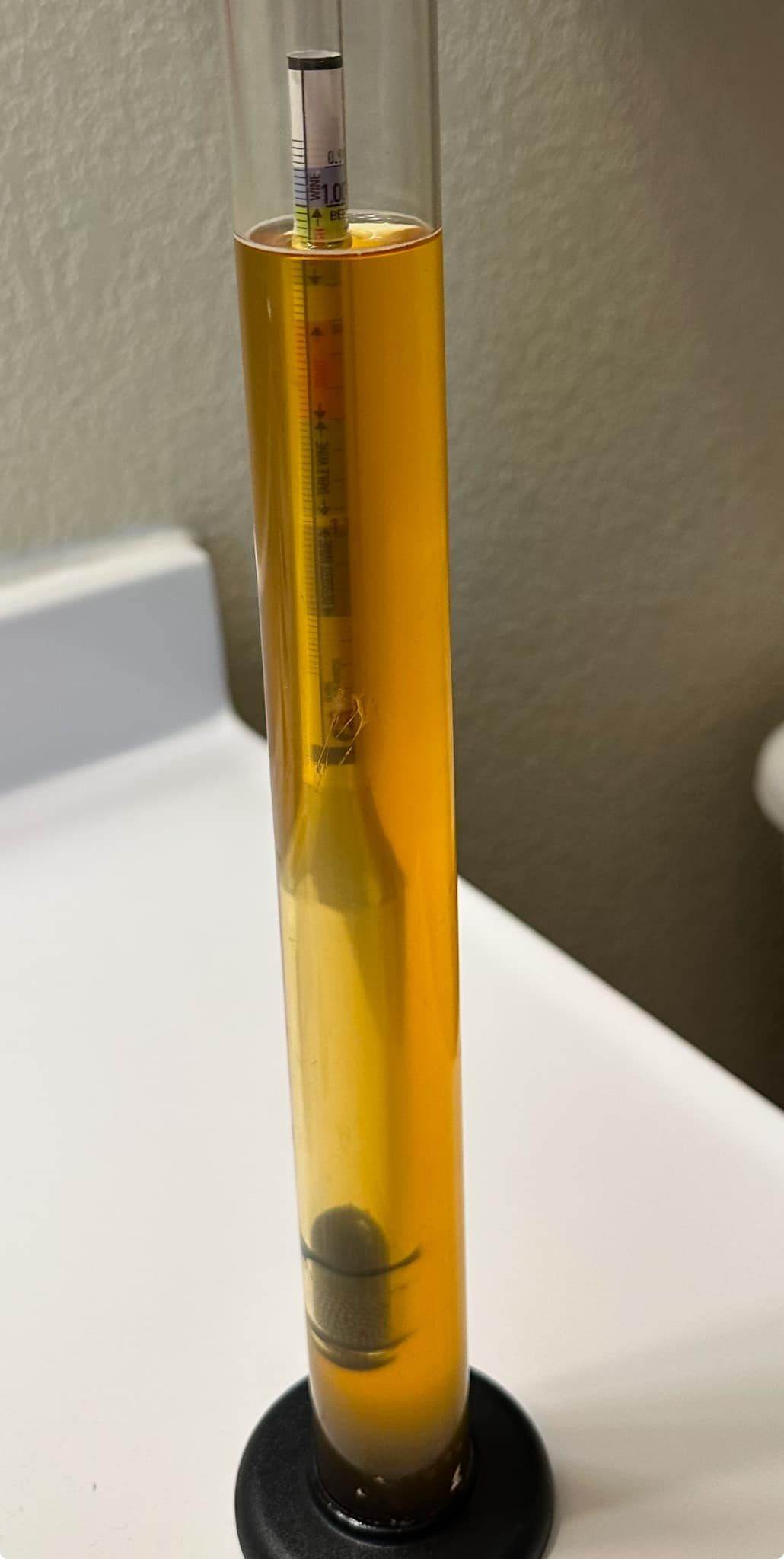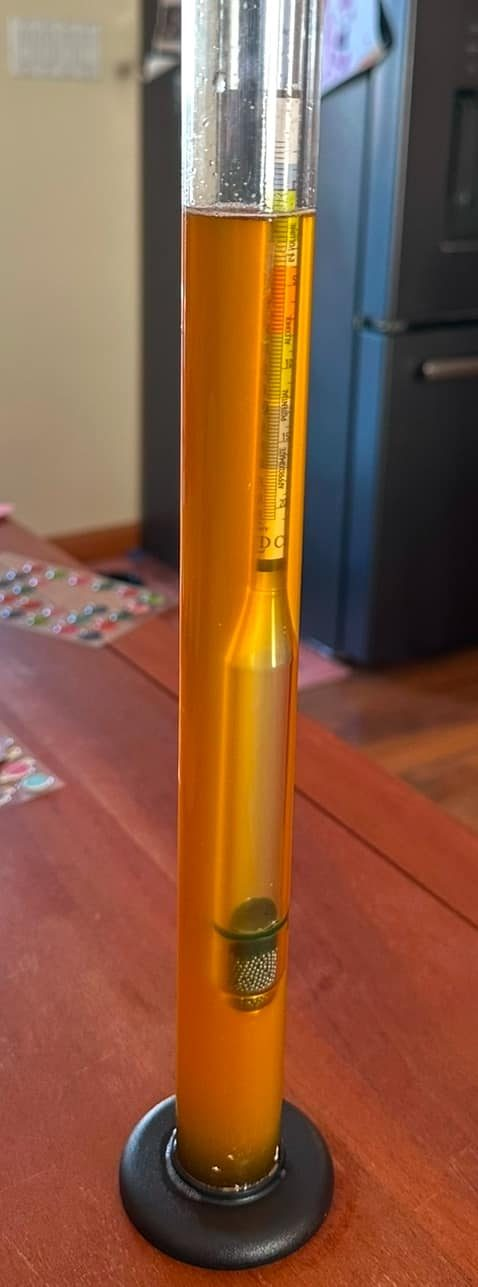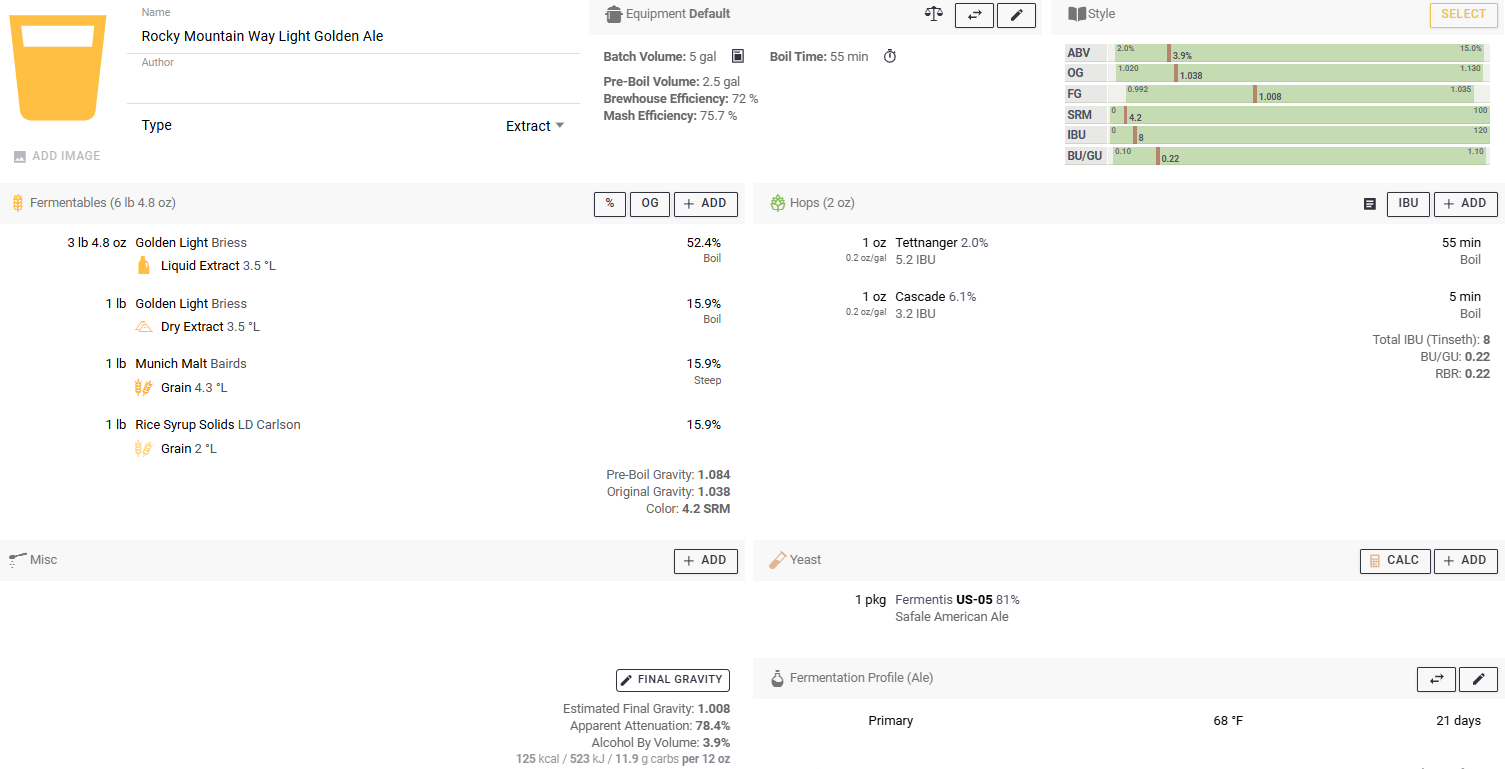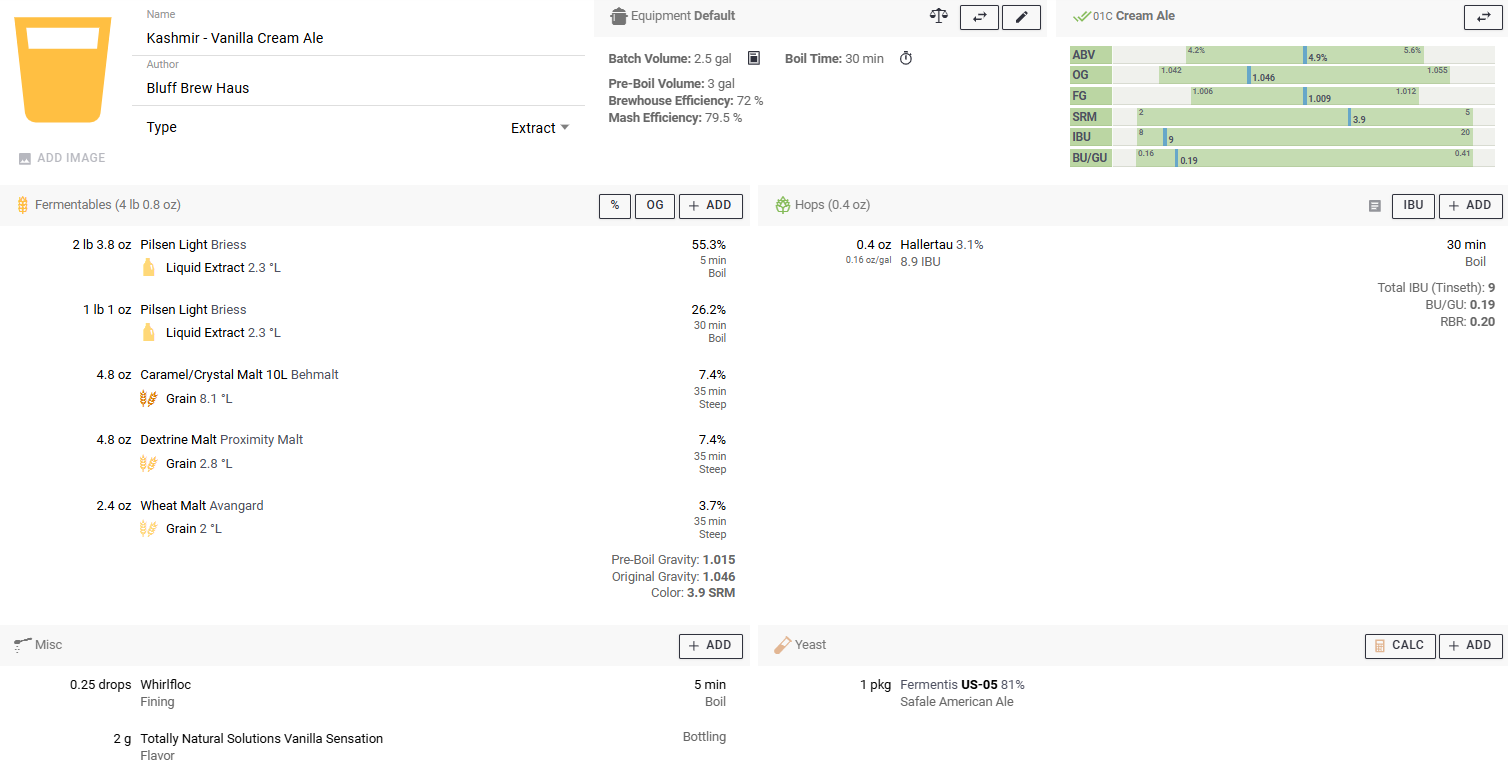NewBrewer2025
Active Member
When I made my first extract kit a month ago (light golden ale), I discovered the impacts of adding all the extract at the beginning, which was a darker color and a caramelization type of flavor to it. Still tastes good, but wasn't what I was going for exactly.
So when I went to make my next batch of extract (vanilla cream ale), I decided to add the LME at different times. I added 30% at the beginning, and the remainder with about 5 minutes left in the boil.
These brews were supposed to be pretty similar SRMs, and you can see the results below. Also, after 7 days of fermenting, my vanilla ale has hit the FG (1.009), though I'm probably going to give it another week (I would do it Friday, but I'll be watching the NCAA Tournament).
The first one is the sample I pulled today on the cream ale, and the second one is my first batch of light golden ale. The first one also has a little darker lighting, so the color is even brighter. And I expect it to clear up a but more over the next week, which should make it look real nice.
Very happy I discovered this, and just wanted to put it out there for any other beginning brewers to see!


So when I went to make my next batch of extract (vanilla cream ale), I decided to add the LME at different times. I added 30% at the beginning, and the remainder with about 5 minutes left in the boil.
These brews were supposed to be pretty similar SRMs, and you can see the results below. Also, after 7 days of fermenting, my vanilla ale has hit the FG (1.009), though I'm probably going to give it another week (I would do it Friday, but I'll be watching the NCAA Tournament).
The first one is the sample I pulled today on the cream ale, and the second one is my first batch of light golden ale. The first one also has a little darker lighting, so the color is even brighter. And I expect it to clear up a but more over the next week, which should make it look real nice.
Very happy I discovered this, and just wanted to put it out there for any other beginning brewers to see!



































![Craft A Brew - Safale S-04 Dry Yeast - Fermentis - English Ale Dry Yeast - For English and American Ales and Hard Apple Ciders - Ingredients for Home Brewing - Beer Making Supplies - [1 Pack]](https://m.media-amazon.com/images/I/41fVGNh6JfL._SL500_.jpg)

























